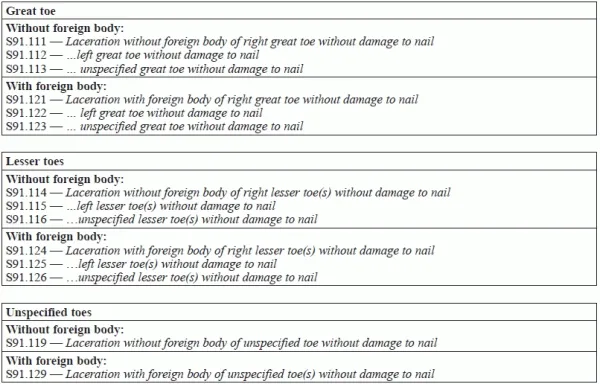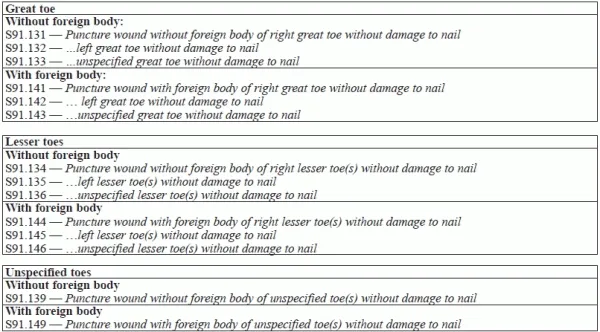Podiatry Coding & Billing Alert
Open Toe Wound Coding Gets Much More Specific in 2015
Three ICD-9 codes will turn into dozens of options under ICD-10.
The diagnosis codes for open wounds of the toes are, to many coders, a brilliant illustration of how ICD-10 adds specificity — and complexity — to the ICD-9 diagnosis coding system. What had been three codes under ICD-9 will turn into several dozen once ICD-10 becomes effective on Oct. 1, 2015.
ICD-9: Under the current diagnosis coding system, the three codes you can use to describe open wounds of the toes are:
ICD-10: Starting in October 2015, to find the right code, the podiatry coder will have to answer a few questions:
Here, we’ll look at the open toe wound codes that do not involve damage to the nail. The series of codes where nail damage is involved is also several dozen codes long; look for information on those codes in an upcoming issue.
Lacerations: For laceration of toes without nail damage, report one of these ICD-10 codes:




Podiatry Coding & Billing Alert
- Nail Treatments:
Keep Ingrown Toenail Confusion from Irritating Your Claims
Key: Distinguish 11730, 11750 and 11765 from routine foot care. As a podiatry practice, surgical [...] - ICD-10:
Open Toe Wound Coding Gets Much More Specific in 2015
Three ICD-9 codes will turn into dozens of options under ICD-10. The diagnosis codes for [...] - Compliance:
OIG Considers Expanding Civil Monetary Penalties
You could be subject to penalties for five additional reasons if the proposal is finalized. [...] - HIPAA:
Let This Example Show You What Not to Do With Your BAs
Warning: You can be responsible for your BA’s violations. Your practice has a solid HIPAA [...] - Reader Question:
Slow Patient Won't Justify Timely Filing Exception
Question: Our patient gave us her Medicare card but said Medicare was her secondary payer. She [...] - Reader Question:
Don't Get Too Comfortable With Blanket ABNs
Question: I recently started working at a practice that I think overuses ABNs. Can we ask [...] - You Be the Coder:
Anterior Tibialis Tendon Repair
Question: How would I code for the repair of the anterior tibialis tendon in the foot? [...]

